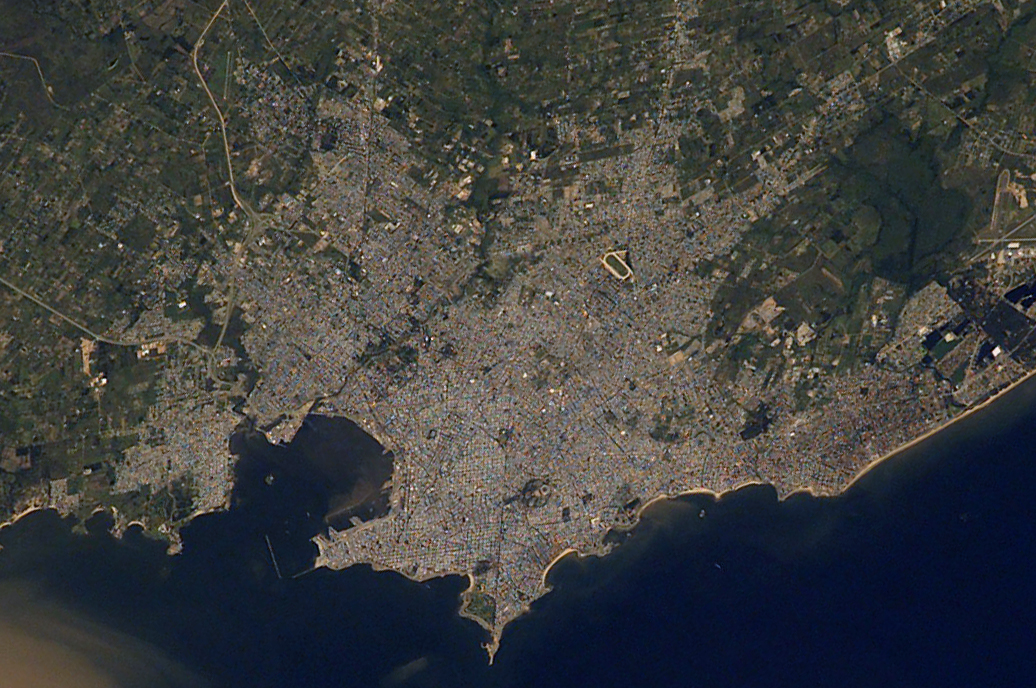 link here...
link here... 
Montevideo (Spanish pronunciation: [monteβiˈðeo]) is the largest city, the capital, and the chief port of Uruguay. The settlement was established in 1726 by Bruno Mauricio de Zabala, as a strategic move amidst a Spanish-Portuguese dispute over the Viceroyalty of the Río de la Plata, and as a counter to the Portuguese colony at Colonia del Sacramento. According to the census of 2004, Montevideo has a population of 1,325,968 (about half of Uruguay's population).[8] It has an area of 530 square kilometres (200 sq mi) and extends 20 kilometres (12 mi) from west to east. The southernmost cosmopolitan capital city in the Americas and third most southerly in the world, it is situated in the southern coast of the country, on the northern bank of the Río de la Plata (also River Plate), an arm of the Atlantic Ocean. The city was under brief British rule in 1807 and was involved in the first major naval battle in the Second World War: the Battle of the River Plate. It is also the place where the Montevideo convention was signed in 1933 by nineteen nations of the Americas. The city hosted all 1st FIFA World Cup matches in 1930. Montevideo has a rich architectural and cultural heritage, the latter including tango and candombe. According to Mercer Human Resource Consulting, in 2007 Montevideo provided the highest quality of life in Latin America.[2][3][4][5][6][7]
Described as a "vibrant, eclectic place with a rich cultural life", it is the hub of commerce and higher education in Uruguay: its first university, the "Universidad de la República", was founded in 1849.[2][4][9] The architecture of Montevideo, considered unrivalled in South America, reflects its history, ranging from colonial to Art Deco, and influenced by Spanish, Portuguese, Italian, French and British immigrants.[2][3][10] (Source: Wikipedia)




